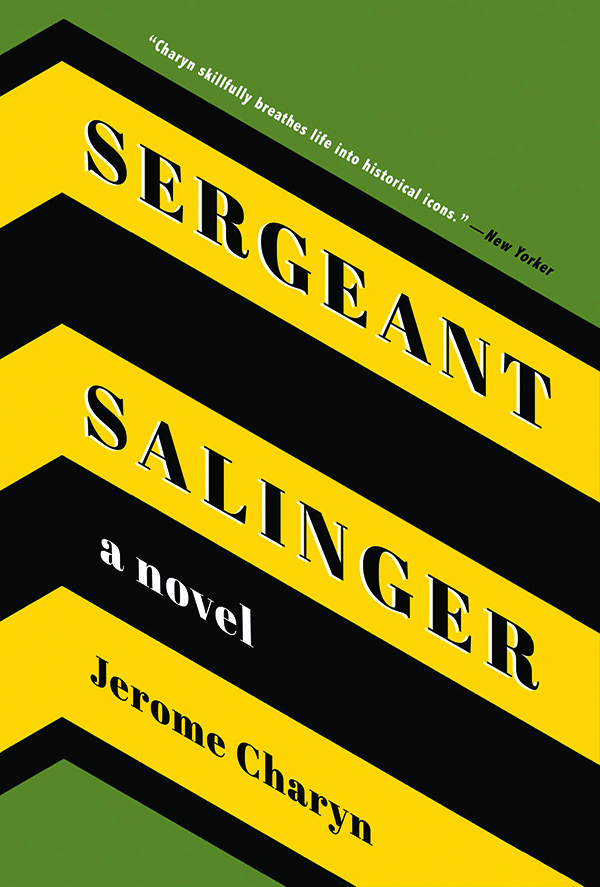In the autumn of 2013, David Shields and Shane Salerno produced an eagerly awaited biography of J.D. Salinger. Besides confirming the long-held assumption that the author of The Catcher in the Rye, who died in 2010 after decades of abstaining from publishing, had continued to churn out fiction from the privacy of his home in New Hampshire, Shields and Salerno made a daring and, in hindsight, foolhardy prediction: Between 2015 and 2020, the co-authors foretold, the first in a series of previously unpublished works by Salinger would finally be bound between two covers.

Six years have elapsed since Shields and Salerno made their prognostication. Many notable and unlikely things have happened in the world since then, but the Salinger publications remain firmly out of sight. Matt Salinger, the author’s son and the overseer of his literary affairs, has said that they will, someday, emerge, but no release date is on the horizon.
Meanwhile, Salinger’s faithful fans have had to subsist on pretty slim pickings. In 2014, a trio of youthful stories by Salinger somehow escaped the reach of his estate, emerging from a tiny publishing house in the mundanely titled collection Three Early Stories. Then, a few years after that, Salinger was made the protagonist of a moody independent movie, Rebel in the Rye, improbably starring Mad Max: Fury Road actor Nicholas Hoult as the great author.
Now, a new novel has emerged that imaginatively extrapolates Salinger’s traumatic, seemingly character-forming time in the Army during World War II. Alas, Jerome Charyn’s Sergeant Salinger is the thinnest gruel of all, a tired, rather tedious elaboration of the biographical record that will do little to satiate Salinger’s legion of devotees. In fact, the novel is no patch on Salinger’s own fictionalized account of World War II-induced trauma, the masterly 1950 short story “For Esme — with Love and Squalor.”
Like an episode of FX’s Feud: Bette and Joan, the novel is peopled not merely with a single fictionalized celebrity but a roomful of them. In the opening scene, Charyn summons to literary life the Stork Club, where assorted beautiful people — foremost among them the dark-haired, glamour girl daughter of Eugene O’Neill, Oona — flit in and out of the life of Salinger, called here and throughout the novel by his nickname, “Sonny.” Charyn does not so much recreate these personages as reduce them to a set of cliches. Oona is said to be “a timid tigress, ready to burst out of the seams of whatever dress she wore,” while her chief enabler in her jet-setting lifestyle, columnist Walter Winchell, speaks in imitation Guys and Dolls dialogue, stealing the object of Salinger’s affections for a dance by saying: “Big Ears, can I borrow Oona for a sec? I’d like to show the civilians what the rhumba is really like — a la Walter Winchell.” Naturally, Ernest Hemingway puts in several appearances.
By the time Salinger is deposited overseas as a member of the Counter Intelligence Corps, the action becomes more engaging and often harrowing. Yet Charyn, who has come to specialize in fiction featuring real-life figures, is unable to conquer the basic implausibility of the genre: In order to pad out a narrative, the author must dream up scenes and dialogue exchanges, but in dreaming them up, the reader has to squint to accept them as believable. This is particularly challenging when imagining the doings and sayings of a recluse such as Salinger, whose day-to-day behavior is difficult to envisage fully. Very often, the reader is left thinking: “Well, Salinger might have said that,” or, “That sounds like something Salinger could have thought.” Known, solid biographical details help — Salinger the movie buff is honored when, transforming himself into “E Company’s projectionist,” he screens Hitchcock’s The 39 Steps and The Lady Vanishes, acknowledged to be among his favorites — but references to the hero’s burgeoning fiction career are clunky and obvious: “He sat near a hooded hurricane lamp and worked on his Holden Caulfield novel.”
By far, the most compelling stretch of the novel describes Salinger’s horror at encountering a concentration camp in Germany, a powerful dramatization of actual events. Charyn writes hauntingly of Salinger’s jeep being greeted by liberated survivors weakened by sickness, torture, and hunger: “They wanted to clap for Sonny and the corporal. But they did not have enough skin on their hands. So their clapping was so faint that it was like the muffled caw of a forlorn bird.” Affecting, too, is the tenderness Salinger shows to a 12-year-old survivor of the camp, a girl called Alicja discovered in a bordello used by Nazi officers. “He realized how foolish he must have seemed to the girl,” Charyn writes. “Liberators. No one could liberate her.” As imagined by Charyn, Salinger’s rage is convincing and propulsive.
The balance of the novel, however, is less persuasive. Charyn sketches Salinger’s relationship with and subsequent marriage to a German woman named Sylvia, but rather than explicating a mysterious chapter in Salinger’s life, the only thing it proves is the literary community’s seeming undying fascination with Salinger’s love affairs. Let us not forget that whatever instinct Salinger may have had to release new fiction during his lifetime was likely foreclosed with the publication of Joyce Maynard’s tell-all of her odd, troubling romance with Salinger, At Home in the World, in 1998.
What accounts for the prevalence of books such as At Home in the World or Sergeant Salinger or, for that matter, the existence of parodies such as Gordon Lish’s “For Rupert — With No Promises,” an imitation Salinger story, published bylineless in Esquire in 1977? Salinger himself must bear the blame: Had he released new fiction, there would scarcely be a market for ancillary works such as these.
Peter Tonguette writes for many publications, including the Wall Street Journal, National Review, and Humanities.

